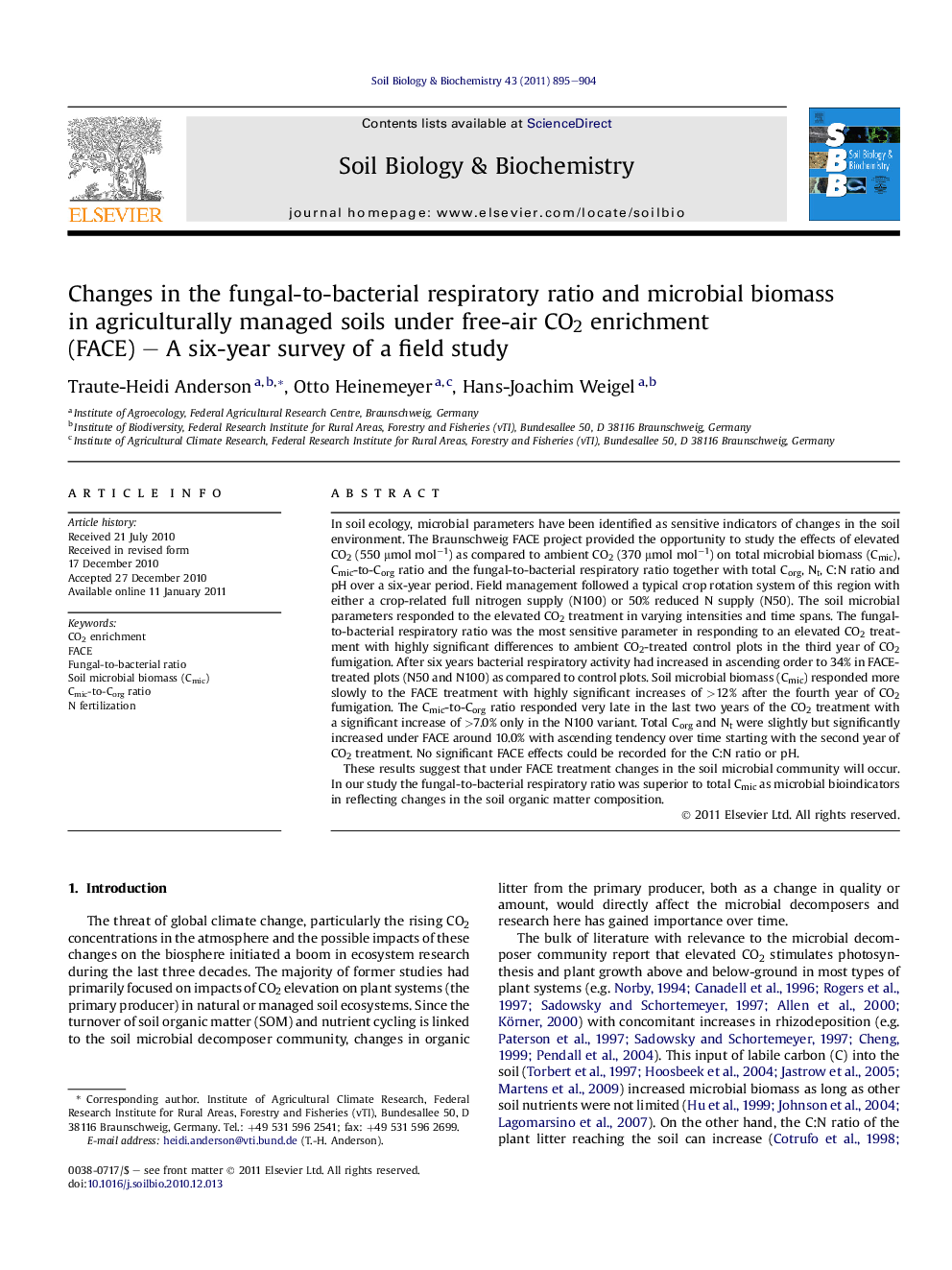| Article ID | Journal | Published Year | Pages | File Type |
|---|---|---|---|---|
| 2025508 | Soil Biology and Biochemistry | 2011 | 10 Pages |
In soil ecology, microbial parameters have been identified as sensitive indicators of changes in the soil environment. The Braunschweig FACE project provided the opportunity to study the effects of elevated CO2 (550 μmol mol−1) as compared to ambient CO2 (370 μmol mol−1) on total microbial biomass (Cmic), Cmic-to-Corg ratio and the fungal-to-bacterial respiratory ratio together with total Corg, Nt, C:N ratio and pH over a six-year period. Field management followed a typical crop rotation system of this region with either a crop-related full nitrogen supply (N100) or 50% reduced N supply (N50). The soil microbial parameters responded to the elevated CO2 treatment in varying intensities and time spans. The fungal-to-bacterial respiratory ratio was the most sensitive parameter in responding to an elevated CO2 treatment with highly significant differences to ambient CO2-treated control plots in the third year of CO2 fumigation. After six years bacterial respiratory activity had increased in ascending order to 34% in FACE-treated plots (N50 and N100) as compared to control plots. Soil microbial biomass (Cmic) responded more slowly to the FACE treatment with highly significant increases of >12% after the fourth year of CO2 fumigation. The Cmic-to-Corg ratio responded very late in the last two years of the CO2 treatment with a significant increase of >7.0% only in the N100 variant. Total Corg and Nt were slightly but significantly increased under FACE around 10.0% with ascending tendency over time starting with the second year of CO2 treatment. No significant FACE effects could be recorded for the C:N ratio or pH.These results suggest that under FACE treatment changes in the soil microbial community will occur. In our study the fungal-to-bacterial respiratory ratio was superior to total Cmic as microbial bioindicators in reflecting changes in the soil organic matter composition.
Research highlights► FACE treatment changes the soil microbial community. ► Microbial indicators respond to elevated CO2 in vaying intensities and time spans. ► The fungal-to-bacterial ratio was the most sensitive parameter in responding to CO2. ► The fungal-to-bacterial ratio is superior to Cmic in responding to elevated CO2. ► We observed a linear relationship between time and increase in FACE effects.
